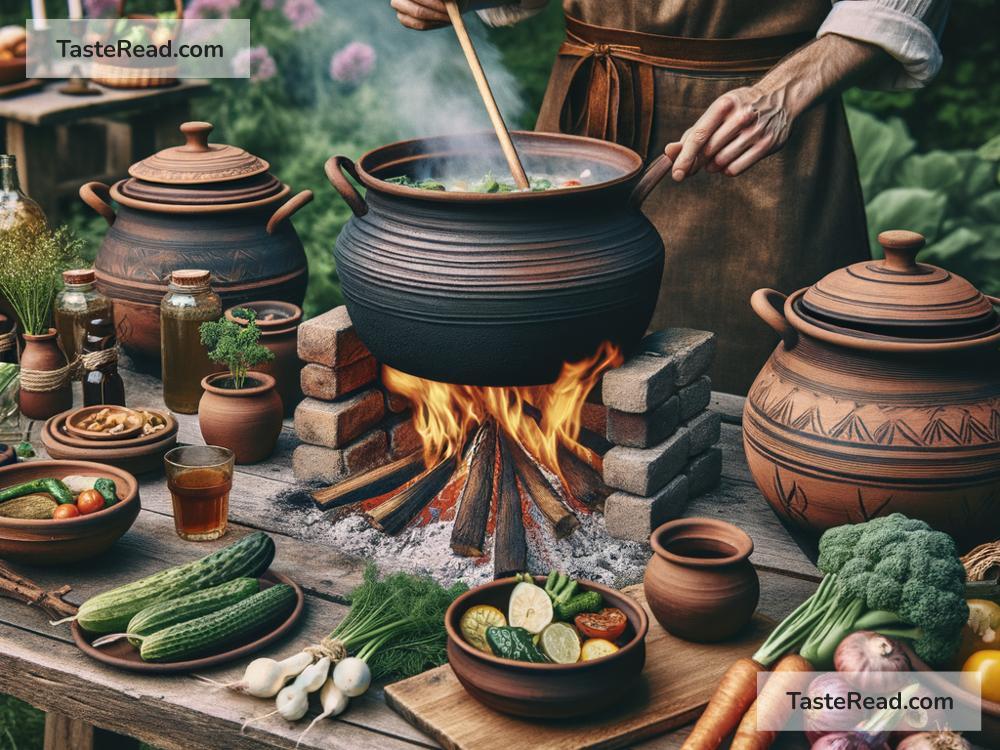The Science of Cooking with Natural Elements: Techniques and Tips
Cooking isn’t just a way to prepare food—it’s an art, a tradition, and, believe it or not, a science. By using natural elements like fire, water, air, and even earth, people have been transforming ingredients into delicious meals for thousands of years. This article will explore how you can use these natural elements to cook, and we’ll include simple techniques and tips to help you become a better cook.
Cooking with Fire
Fire has always been at the heart of cooking. From ancient campfires to modern stovetops, fire helps us create heat to cook food in different ways. Here are some common methods using fire:
1. Grilling:
Grilling involves cooking food over an open flame. This is perfect for meats, vegetables, or even fruits like pineapple. The direct heat brings out smoky flavors and caramelizes the surface of the food. To grill like a pro, make sure you preheat your grill and oil your grates so food doesn’t stick.
2. Roasting:
Roasting uses the dry heat of a fire or oven to cook food evenly. Think of a roasted chicken or roasted vegetables—they become crispy on the outside and tender on the inside. For the best results, keep your oven temperature consistent and don’t overcrowd your food on the baking tray.
3. Smoking:
Smoking adds flavor by slowly cooking food with the smoke from burning wood. This technique is common for barbecue dishes like ribs or brisket. You can use wood chips or chunks, and different types of wood—such as hickory or applewood—give different flavors.
Cooking with Water
Water is a natural element we often take for granted in cooking, but it plays a huge role. Boiling, steaming, and simmering are all techniques that use water to cook food gently.
1. Boiling:
Boiling is the most common way to use water in cooking. Whether you’re making pasta or blanching vegetables, boiling water cooks food quickly. To prevent overcooking, test your food frequently and remove it from the water as soon as it’s done.
2. Steaming:
Steaming uses hot water vapor to cook without submerging the food. It’s one of the healthiest methods because it preserves nutrients. You can steam vegetables, fish, or dumplings. A steamer basket or bamboo steamer works best for this method.
3. Poaching:
Poaching is cooking food gently in water that’s heated below boiling point, roughly 160–180°F (70–82°C). It’s ideal for eggs, fish, or fruits. To avoid toughening the food, keep the water temperature steady and low.
Cooking with Air
Though it might seem less traditional, air plays a role in many modern cooking techniques. From baking to using convection ovens, air transfers heat to food and transforms it.
1. Baking:
Baking involves cooking food, usually dough, using dry heat in an oven. Cookies, bread, and cakes are baked treats loved all over the world. To bake successfully, measure your ingredients carefully, preheat your oven, and avoid opening the oven door frequently.
2. Roasting with Convection:
Convection ovens use fans to circulate hot air, cooking food faster and more evenly than traditional ovens. This method is great for roasted meats or vegetables that need a crispy texture. Be mindful of reducing temperature by about 25°F compared to recipes for standard ovens.
Cooking with Earth
Cooking with earth might sound unusual, but it’s an ancient technique still used today. Methods like earthen ovens, clay pots, and underground pits rely on heat from the earth to cook food slowly.
1. Clay Pot Cooking:
Clay pots are natural cooking vessels that retain heat and moisture exceptionally well. They are used in cuisines worldwide for dishes like Indian biryanis or Moroccan tagines. Always soak your clay pot in water before cooking to prevent cracking.
2. Underground Pit Cooking:
This involves digging a hole in the ground, filling it with hot coals, and cooking food slowly for hours. It’s a traditional method used for dishes like Hawaiian kalua pork. Wrap your food in banana leaves or aluminum foil to keep it moist.
3. Salt or Stone Baking:
In certain cultures, food is baked directly on heated stones or encased in salt. The stones transfer heat directly to the food while preserving natural flavors. Try baking fish or vegetables for a natural, earthy taste.
The Science Behind It All
Cooking with natural elements is not only creative but also scientific. Every technique works because of how heat, moisture, and air transform food on a molecular level. For example:
- Caramelization: High heat causes sugars in food to break down, creating rich, sweet, and nutty flavors. This happens when grilling or roasting.
- Maillard Reaction: This chemical reaction creates brown and savory flavors when proteins and sugars are heated. It’s responsible for the delicious crust on steak or bread.
Tips for Mastering Natural Cooking
- Understand Heat Levels: Learn the difference between high, medium, and low heat. Adjust the flame or temperature to suit your food.
- Be Patient: Some methods, like smoking or pit cooking, take time. Slow cooking creates deeper flavors.
- Experiment with Flavors: Try different woods, herbs, or spices to enhance the natural taste of your food.
- Focus on Fresh Ingredients: Natural cooking techniques work best when your ingredients are fresh.
- Clean as You Go: Fire, water, and earth cooking can get messy. Cleaning while cooking makes the process smoother.
Cooking with natural elements is an enjoyable way to connect with the environment, your food, and the science behind it all. By understanding and practicing techniques like grilling, steaming, baking, and clay pot cooking, you can develop a deeper appreciation for the process and prepare meals that are wholesome, flavorful, and unique.
So grab those ingredients and start cooking—it’s not just science; it’s magic in your kitchen!


